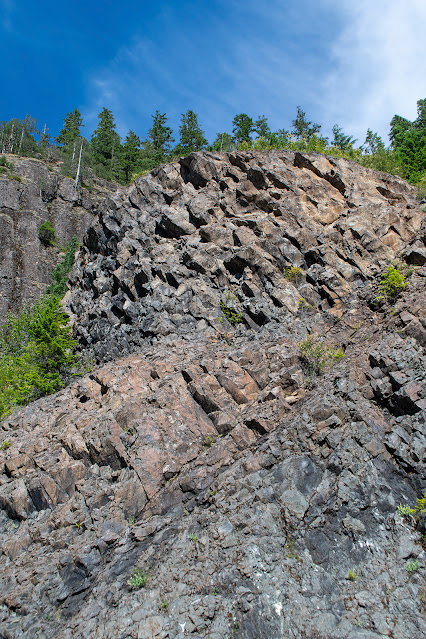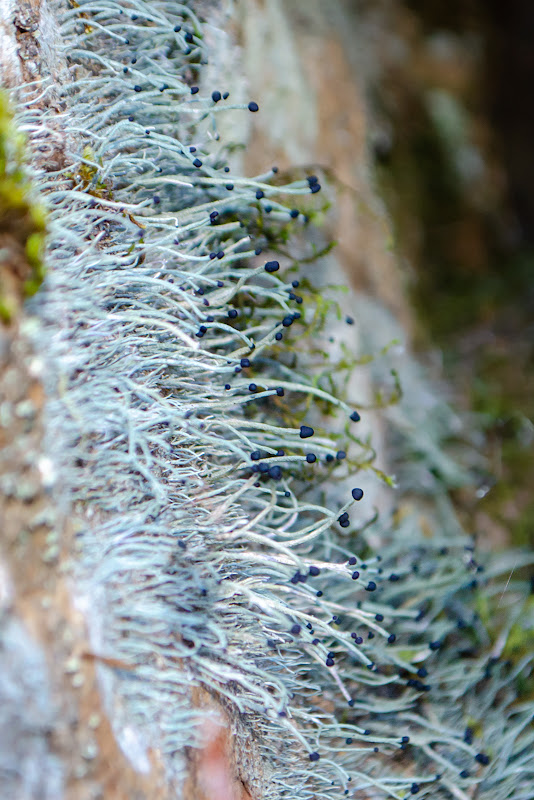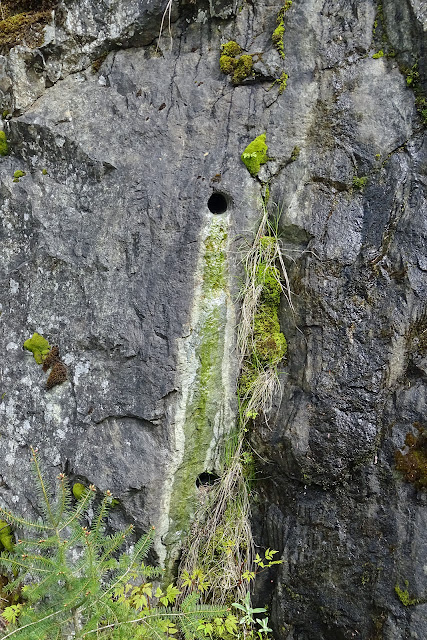I find masses of rock, the bones of the earth, curiously comforting. Maybe it's their indifference to the passing whims of wind and weather and the feeble scratchings of people below them. Maybe it's because they're always just there, while the centuries roll over them.
 |
| Mount Flannigan, Elk River, central Vancouver Island. |
Rivers wander about, chewing at the land they flow through, changing their paths, rising and falling. The rocks remain.
 |
| In a valley near the Elk River |
Summer brings a froth of green around the base of the mountains; evergreens blanket the upper slopes. Even they come and go. The rocks remain.
 |
| The face of Mount Flannigan |
Somehow, amid the panics and enthusiasms of the day, a look at a rock face slows time, calms me.
 |
| No-name hills behind Drum Lakes (really two small, shallow puddles, but the map names them.) Rising water levels have killed the lower trees. |
Photos on a rainy afternoon near Gold River.
~~~~~~~~~~~~~~~~~~~~~
Contemplando la roca, la materia esencial de nuestra tierra, me trae consuelo. Tal vez por su indiferencia a los accidentes del día, el viento y las tormentas, los rasguños que hacemos los humanos, el paso de los años.
Los ríos vienen y se van, cambian su camino, suben y bajan. La roca permanece.
Lo verde es una espuma que pasa. La roca permanece.
Entre los terrores y los entusiasmos del día, miro la cara de una montaña y descanso.
Las fotos son de cerros al lado del Rio Elk, en una tarde lluviosa.

























































